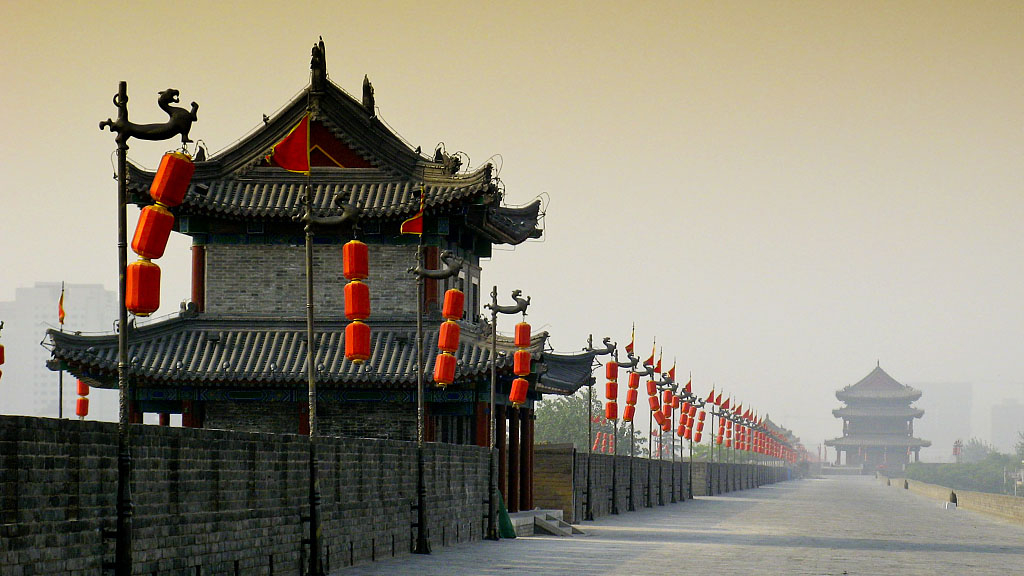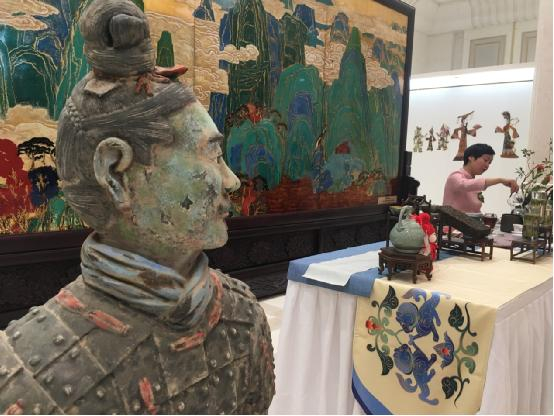

Located in northwest China, Shaanxi Province boasts thousands of years of rich history. From terracotta warriors to Chinese revolutionary history, Shaanxi is a world all on its own. But since the founding of the Peoples Republic of China (PRC), or New China, the province has developed into a place with great promise for businesses and equipment manufacturing over the past 70 years.
The province's economic aggregate increased from less than 1.3 billion yuan in the early years to 2.44 trillion yuan in 2018. The fiscal revenue increased from less than 100 million yuan to 224.3 billion yuan, and the per capita disposable income for urban residents increased to 33,319 yuan and to 11,213 yuan for rural residents.
It is one of the important birthplaces of the Chinese nation and the Chinese culture. The province is known as "a natural history museum" for its cultural heritage sites such as the site of homo erectus lantianensis, the Banpo site, and the Mausoleum of the Yellow Emperor.

Outside of the press briefing room, a replica of a Terracotta Warrior placed in front of a tea table. It is a symbolic item of Shaanxi Province. /CGTN Photo
In over 1,000 years, more than 10 imperial regimes such as Zhou, Qin, Han and Tang placed their capital cities in Shaanxi. In the early days of its revolutionary cause, the Communist Party of China based itself in Yan'an. With a profound culture and history, Shaanxi houses numerous spiritual and natural landmarks such as the Mausoleum of the Yellow Emperor, the Terracotta Warriors, Yan'an Baota Pagoda, Qinling and Mount Hua, which epitomize Chinese civilization, revolution and geography.
The Chang'an cargo train has its origins there – one example of the long-running business cooperation between China, Central Asia and Europe. Shaanxi's last 70 years were the focus at a Wednesday event in Beijing. Officials showed a complete picture of the accomplishments here in the PRC era.
The secretary of Provincial Party Committee of Shaanxi Province said: "In recent years we have promoted the transformation and upgrading of traditional industries such as equipment manufacturing, food and medicine, and accelerated the high-end development of energy and chemical industries. We have made great efforts to develop strategic emerging industries, and industries such as electronic information, new energy and new materials."
New energy vehicles and industrial robots have maintained double-digit growth in recent years. Shaanxi is now the world's largest producer of monocrystalline silicon products. Large transport aircraft, flash memory chips, and high-end LCD panels are products in which the province has recently gained a distinctive competitive edge.
Meanwhile, the development of modern agriculture is another gain for local economic growth. Officials say the next goal is to set up a Shanghai Cooperation Organization (SCO) demonstration base to enhance exchange and training of agricultural technologies with SCO countries.
The governor of the province say: "We would like to cooperate with SCO countries in international agricultural trade. Our province has the only pilot free trade zone featuring agriculture in China. We hope to give full play to the advantages of the pioneering system of innovation and actively develop foreign trade related to agriculture, production capacity cooperation and financial innovation."
The province attached great importance to ecological and environmental protection of Qin Mountains and issued China's first protection law for mountains. They've improved the grid management system for protecting the ecology and environment of Qin Mountains and completely removed illegal villas at the north side of the mountains.
The province is also a significant base for sci-tech innovations. There are more than 1,100 scientific research institutions, 65 academicians of the Chinese Academy of Sciences and Chinese Academy of Engineering and 275,000 scientific and technological personnel. The province also leads the world in aerospace technology, 3D printing and 5G mobile communication. It has more science and technology awards and a greater technology trading volume than many other provinces in China.

Copyright © 2018 CGTN. Beijing ICP prepared NO.16065310-3
Copyright © 2018 CGTN. Beijing ICP prepared NO.16065310-3